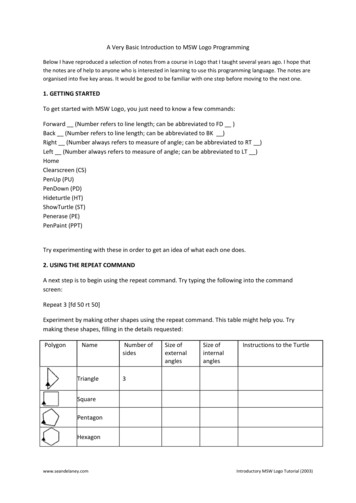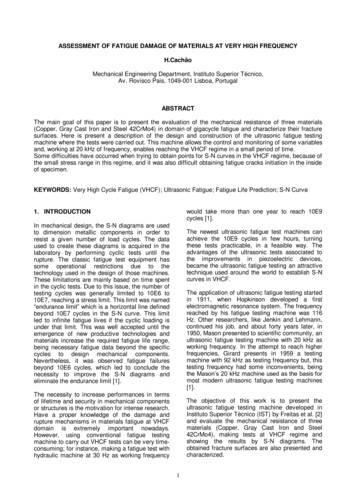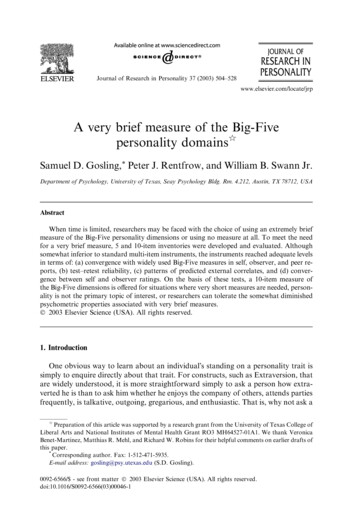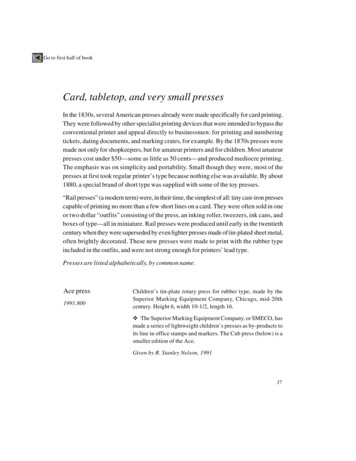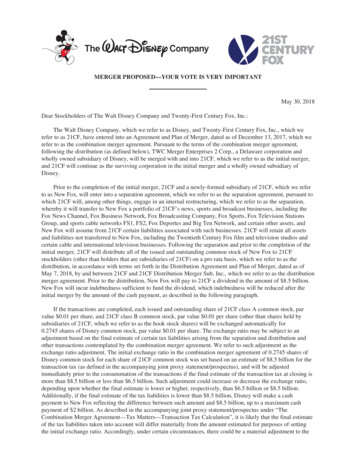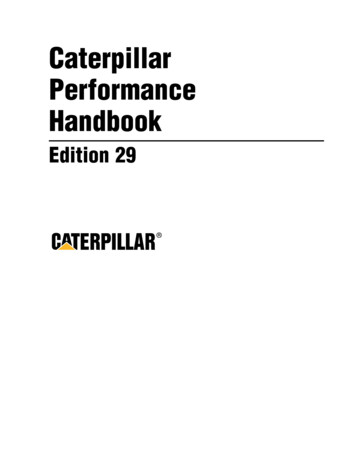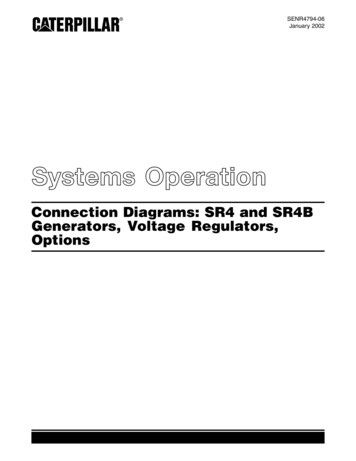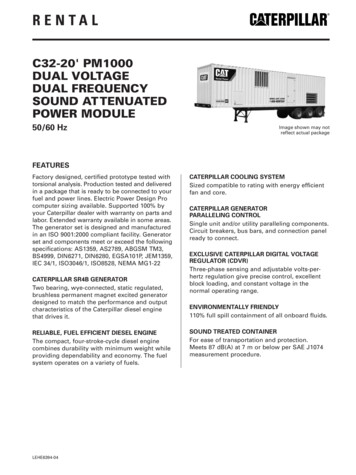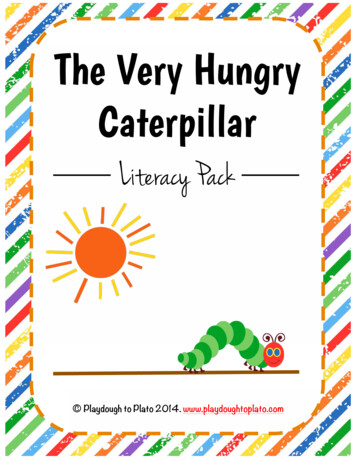
Transcription
The Very HungryCaterpillarLiteracy Pack Playdough to Plato 2014. www.playdoughtoplato.com
The Very HungryCaterpillarLiteracy Pack{Reading}Life Cycle DiagramStory CardsSmart Caterpillar Word GamePage 5Page 6Page 11{Writing}Planning the StoriesWriting the BooksPage 15Page 18
Want More?Check out our other activity packs here:http://www.playdoughtoplato.com/printables
Getting StartedDirections: Type 18 sight words in the spaces below. The PDF will automatically plugthose words into all of the games. Click “Save As” and give the file a new name. Forexample, you might call it “Week One” or “Blue Group – List Two”. When you’reready to make a new set of games, just type the next set of words below and click“Save As” to create a new file. .
butterfly life cycle diagramMaterials: The Very Hungry Caterpillar Chart paper or something similar. Black marker.Time:15 minutes.Read “The Very Hungry Caterpillar” out loud with theclass. {Note: The book says that the caterpillar builds acocoon around himself. Since the caterpillar turns into abutterfly, the word should actually say chrysalis. Mothsbuild cocoons.}Have students use what they learned from listening to thestory to help you create a butterfly life cycle diagram likethis one:Optional: Order a live caterpillar kit to watch the caterpillarlife cycle in person. I’ve ordered mine through Insect Lorein the past. At the time of publication, their Live ButterflyGarden was 19.99 shipping.Optional: Have students createtheir own caterpillar life cycle on asheet of white construction paper.In this example, students folded apiece of paper in fourths. Theyglued pinto beans on a piece ofgreen construction paper to makecaterpillar eggs on a leaf. Thenthey glued eyes on a pipe cleanerto form their caterpillar. Theywrapped a piece of white yarnaround a piece of pasta to maketheir chrysalis and usedconstruction paper and pipecleaners to make their butterfly.
VERY HUNGRY CATERPILLAR STORY CARDSAssembly tip: Print the story cards on cardstock and laminate to make them extra sturdy.Materials: “The Very Hungry Caterpillar” Several copies of the story cards for kids to use in partners or small groups.After reading the story together, lay out the first 5-6 cards in random order. Have kids help you find thecard that shows the first thing that happened in the story {a little egg laying on the leaf}. Lay the card infront of you.Find the next thing that happened {the sun came up and –pop!- out of the egg came a tiny and very hungrycaterpillar} and place that card next to the first one.Continue organizing several more cards in order. Then have students work in partners or small groups toorder their stack of story cards.
Playdough to Plato 2014.Graphics by My Clip Art Store.
Playdough to Plato 2014.Graphics by My Clip Art Store.
Playdough to Plato 2014.Graphics by My Clip Art Store.
Playdough to Plato 2014.Graphics by My Clip Art Store.
THE VERY Smart CATERPILLAR GameAssembly tip: Print the game board on cardstock and laminate to make it extra sturdy. To make gamepieces, cut out the food and clip them with small binder clips. Then squeeze the metal tabs to detach themfrom the clip like this:Materials: A game board, die and playing pieces for each group. Optional: A follow up worksheet and pencil for each student.Type the words you want your kids to practice on the getting started page. They’ll automatically load intothe game board.Have players take turns moving theirplaying piece the number of spacesthey roll on their die. When they landon a space, they’ll read the word outloud and spell it. Then they’ll write theword on their record sheet. If aplayer lands on a piece of fruit with ahole in it, she loses her next turn whileshe rests to eat.The first player to make it to thebutterfly wins the game.
ENDSTART Playdough to Plato 2014.
{Playing Pieces}Optional: Cut out the playing pieces below and stand them up using a binder clip. Invite players to use one of the piecesto mark their spot on the game board as they play. {Note that there are 8 sets of game pieces included so that you canset up 8 simultaneous literacy centers. Playdough to Plato 2014.
NameTHE VERY SMART CATERPILLARDirections: As you play The Very Smart Caterpillar with your group, write the words you land on below. Playdough to Plato 2014.
PLANNING THE BUTTERFLY STORIESMaterials: The Very Hungry Caterpillar Brainstorm sheets for each child. Pencils.Time:15 – 45 minutes depending on age and ability ofclass.Explain that you are going to read the story again, but thistime you want the kids to listen for the caterpillar’s problem. After reading the line, “One Sunday morningthe warm sun came up and –pop!- out of the egg came a tiny and very hungry caterpillar,” stop and say,“Did anyone here the caterpillar’s problem? Whisper it to your neighbor.” {Answer: The caterpillar ishungry.}Say, “Let’s find out how he fixes his problem ” and read the pages describing his eating. Invite the kids tojoin along when you read, “But he was still hungry.”After reading the rest of the story, ask the class, “How did the caterpillar solve his problem?” {Answer: Heate a lot of food.}“What happened when he ate too much food on Saturday?” {Answer: He got sick.}“How did he solve that problem?” {Answer: He atehealthy leaves and felt better.}Tell the class that each student is going to be writingtheir own caterpillar stories. But instead of writingabout hungry caterpillars, they are going to solveanother kind of problem. Have students brainstormother words that could describe a caterpillar problemand write their ideas on a list. Possible optionsinclude, shiny, sleepy, bored, fast, slow, smelly, rudeand colorful.Pick one of the kids’ suggestions to map out togetheras a class. Walk the class through the front page ofthe brainstorm sheet. Then have kids complete theirfront page. Younger students could draw picturesand older students could write words.When the class is ready, come back together andcomplete the back page as a group. Then have kidswork on their back sheet.
NameThe Very CaterpillarIn the light of the moon a little egg lay on a leaf.One Sunday morning the warm sun came up and – pop! – out of the egg came atiny and very caterpillar.On Monday On Tuesday On Wednesday On Thursday Playdough to Plato 2014.He started to look for some .
On Friday On Saturday And that night he felt .The next day was Sunday again. The caterpillar And after that he felt much better.Now he wasn’t little any more - and he wasn’t acaterpillar any more. He was a big, caterpillar.He built a small house called a chrysalis around himself. He stayed inside for morethan two weeks. Then he nibbled a hole in the chrysalis, pushed his way out and he was a beautiful butterfly! Playdough to Plato 2014.
Book ASSEMBLY TIPSPrint the brainstorm sheet front to back.There are two title pages included in the butterfly book. The first copy will be glued onto the cover and thesecond copy will be the title page inside the book.To assemble the book, use this page order: The first title page glued on a piece of 9 x 12 construction paper. The second title page. The story pages. A piece of 9 x 12 construction paper.The cover will look like this when it is complete:And the title page inside the cover will look like this:
WRITING THE BUTTERFLY STORIESMaterials: Each child’s brainstorm sheet.A butterfly book for each child.Pencils.Black felt pens or markers.Crayons.Tissue paper in a variety of colors.Glue sticks.Watercolor paintsSmall bowls of waterShow the class how to copy the words fromtheir brainstorm sheet into their butterflybooks. Give each child his book and have himstart working.When they are ready, bring children backtogether to look at the Eric Carle’s pictures inthe story. Explain that he used pieces of tissuepaper to create his illustrations. It’s a timeconsuming process they’ll get the chance to tryon their cover later but, for now, they’re goingto draw pictures that match the words on eachpage with a black pen and then color it in withcrayons. Layering with several different colorsof crayon will make their illustrations look moreEric Carle-like.Time:Several class sessions for a total of 2-5 hoursdepending on age and ability of class.
WRITING THE BUTTERFLY STORIES {cont.}When kids are ready, show them how to create their Eric Carle inspired book covers.First, draw a very light pencil outline of the caterpillar. Then tear a circular piece of tissue paper for thehead. When the piece is shaped to fit, rub your glue stick on the head you drew and then lay the tissuepaper on top. Depending on how bright your tissue paper is, you may need to lay several pieces of tissuepaper on top of one another to make the caterpillar bright enough.Continue tearing and gluing the tissue paper until your caterpillar is complete.The Very Shiny CaterpillarThis child added glitter on top ofthe tissue paper to make hercaterpillar extra shiny.The Very Annoying CaterpillarThis girl layered 3 pieces oftissue paper on each caterpillarpart to make the colors boldenough.
WRITING THE BUTTERFLY STORIES {cont.}When students are ready, open the book to the title page of The Very Hungry Caterpillar. Ask the class todescribe what they see. Then explain that they are going to create similar title pages in their books.Show them how to use their pencil eraser to stamp circles on their page. Dip a flat-topped pencil eraser intowater and then into the watercolor paint. Starting at the bottom of the title page, press the eraser ontothe paper making a circle. Dip the eraser in a different paint color and stamp a circle next to the first one.Continue stamping several lines of circles on top of one another. Have children try it on their own.Note: Let the paint dry for 1-2 hours before closing the cover.
THE VERYCATERPILLARby Playdough to Plato 2014.
THE VERYCATERPILLARby Playdough to Plato 2014.
In the light ofthe moon alittle egg layon a leaf. Playdough to Plato 2014.
One Sunday morning the warm sun came up and – pop! – out of theegg came a tiny and very caterpillar. Playdough to Plato 2014.
He started to look for some . Playdough to Plato 2014.
On Monday hebut he was still . Playdough to Plato 2014.
On Tuesday hebut he was still . Playdough to Plato 2014.
On Wednesday hebut he was still . Playdough to Plato 2014.
On Thursday hebut he was still . Playdough to Plato 2014.
On Friday hebut he was still . Playdough to Plato 2014.
On Saturday hebut he was still . Playdough to Plato 2014.
That night he felt . Playdough to Plato 2014.
The next day was Sunday again. The caterpillarand after that, he felt much better. Playdough to Plato 2014.
Now he wasn’t any more – and hewasn’t a little caterpillar any more. He was a big,caterpillar. Playdough to Plato 2014.
He built a small house called a chrysalis around himself. He stayedinside for more than two weeks. Then he nibbled a hole in thechrysalis, pushed his way out and Playdough to Plato 2014.
he was a beautiful butterfly! Playdough to Plato 2014.
Want More?Check out our other activity packs here:http://www.playdoughtoplato.com/printables
Graphics CreatedbyMy Clip Art Store
Book ASSEMBLY TIPS Print the brainstorm sheet front to back. There are two title pages included in the butterfly book. The first copy will be glued onto the cover and the second copy will be the title page inside the book. To assemble the book, use this page order: The first
